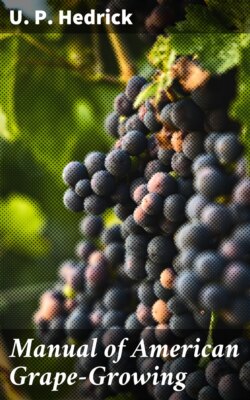Читать книгу Manual of American Grape-Growing - U. P. Hedrick - Страница 19
На сайте Литреса книга снята с продажи.
The Chautauqua grape-belt.
ОглавлениеThe Chautauqua grape-belt, lying along the northeastern shore of Lake Erie in New York, Pennsylvania and Ohio, is the second most important grape region in America. The "belt" is a narrow strip of lowland averaging about three miles in width, lying between Lake Erie and a high escarpment which bounds the belt on the south throughout its entire length of a hundred or more miles. Here climate and soil seem to be exceptionally favorable for grape-growing. Climate is the chief determinant of the boundaries of this belt, since there are several types of soil upon which grapes do equally well in the region, and when the climate changes at the two extremities of the belt where the escarpment becomes low, or when the distance between the lake and the escarpment is great, grape-growing ceases to be profitable.
The growers of this region are organized into selling associations so that estimates of acreage and yields are obtainable. At present writing, 1918, there are in this belt in New York about 35,000 acres of grapes; in Pennsylvania and Ohio, about 15,000 acres, much the greater part of which is in Pennsylvania. The average yield of grapes to the acre for the region is about two tons. The average total production for the past five years has been about 100,000 tons, of which 65,000 tons are shipped as table-grapes, and 35,000 tons are used in the manufacture of wine and grape-juice. Among varieties, Concord reigns supreme in the Chautauqua belt. The writer, in 1906, made a canvass of the region, vineyard by vineyard, and found that 90 per cent of the acreage of the belt was set to Concord, 3 per cent to Niagara, 2 per cent to Worden and the remaining 5 per cent to a dozen or more varieties of which Moore Early and Delaware led.
The manufacture of grape-juice on a commercial scale began in the Chautauqua belt and most of this product is still produced in the region. Here, only Concord grapes of the best quality are used for grape-juice. The growth of this industry is most significant for the future of grape-growing in the region. Twenty years ago grape-juice was a negligible factor in the grape industry of this region; at present, the annual output is in the neighborhood of 4,000,000 gallons. Grape-juice-makers now determine the price of grapes for the region, and while the quantity used is less than that for table-grapes, the time is not distant when it will be greater.
